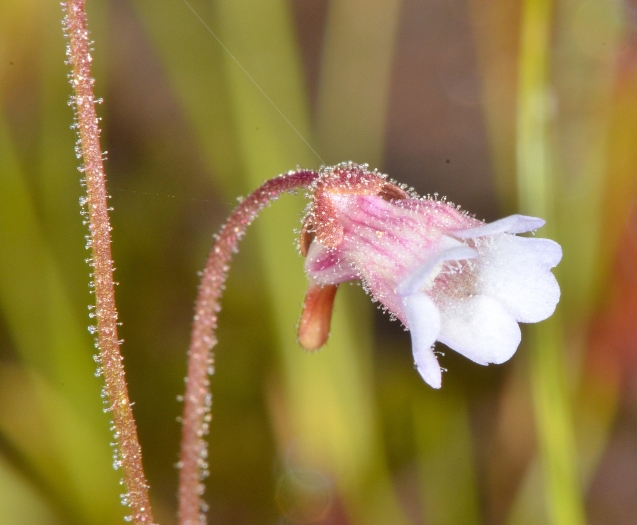Pale Butterwort
(Pinguicula lusitanica)
Pale Butterwort (Pinguicula lusitanica)
/
/

Don Loarie
CC BY 4.0
Image By:
Don Loarie
Recorded By:
Copyright:
CC BY 4.0
Copyright Notice:
Photo by: Don Loarie | License Type: CC BY 4.0 | License URL: http://creativecommons.org/licenses/by/4.0/ | Rights Holder: Don Loarie | Publisher: iNaturalist | Date Created: 2012-05-27T15:56:44-07:00 |
























Estimated Native Range
Summary
Pinguicula lusitanica, commonly known as pale butterwort, is a small perennial carnivorous plant that sometimes behaves as an annual. It is native to acidic peat bogs and wet heathlands along the Atlantic coast of Europe, from Ireland to Portugal, and also found in Morocco. This species forms basal rosettes typically 1-2 inches across, composed of succulent, sticky leaves that trap and digest small insects, providing nutrients in nutrient-poor environments. Pale butterwort produces delicate pale pink flowers with a yellow center, which bloom from late spring to early summer. The flowers are modest in size but can be quite showy when viewed up close due to their unique structure and coloration.
Pale butterwort is valued for its insect-trapping abilities and is often grown by carnivorous plant enthusiasts. It thrives in wet, shaded environments, making it suitable for bog gardens or terrariums. It requires consistently moist, acidic soil and does not tolerate drought or alkaline conditions. In cultivation, it is generally low-maintenance, provided its specific water and soil needs are met. While it self-pollinates, ensuring reliable regrowth, it can also be propagated through leaf cuttings or division. Potential problems include root rot if the soil is too waterlogged and pest infestations such as aphids.CC BY-SA 4.0
Pale butterwort is valued for its insect-trapping abilities and is often grown by carnivorous plant enthusiasts. It thrives in wet, shaded environments, making it suitable for bog gardens or terrariums. It requires consistently moist, acidic soil and does not tolerate drought or alkaline conditions. In cultivation, it is generally low-maintenance, provided its specific water and soil needs are met. While it self-pollinates, ensuring reliable regrowth, it can also be propagated through leaf cuttings or division. Potential problems include root rot if the soil is too waterlogged and pest infestations such as aphids.CC BY-SA 4.0
Plant Description
- Plant Type: Herb
- Height: 0.1-0.2 feet
- Width: 0.1-0.2 feet
- Growth Rate: Moderate
- Flower Color: White, Purple
- Flowering Season: Spring, Summer
- Leaf Retention: Semi-deciduous
Growth Requirements
- Sun: Full Sun, Part Shade
- Water: High
- Drainage: Medium, Fast
Common Uses
Low Maintenance, Water Garden
Natural Habitat
Acidic peat bogs and wet heathlands along the Atlantic coast of Europe and Morocco
Other Names
Common Names: Portuguese Sundew
Scientific Names: , Pinguicula lusitanica, Isoloba lusitanica, Pinguicula alpina, Pinguicula cornubiensis, Pinguicula cornubiensis, Pinguicula minima, Pinguicula minima, Pinguicula pallida, Pinguicula subaequalis
GBIF Accepted Name: